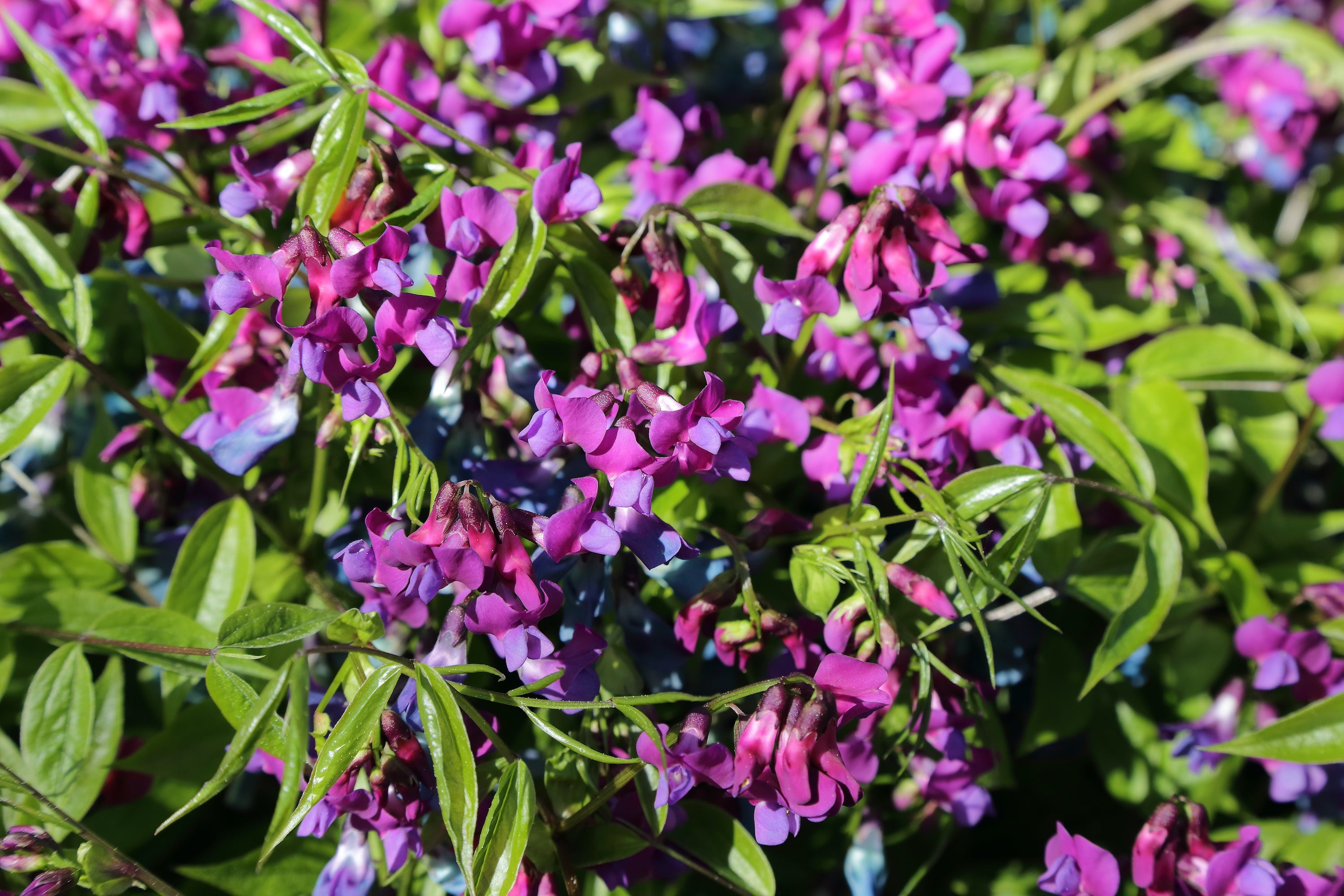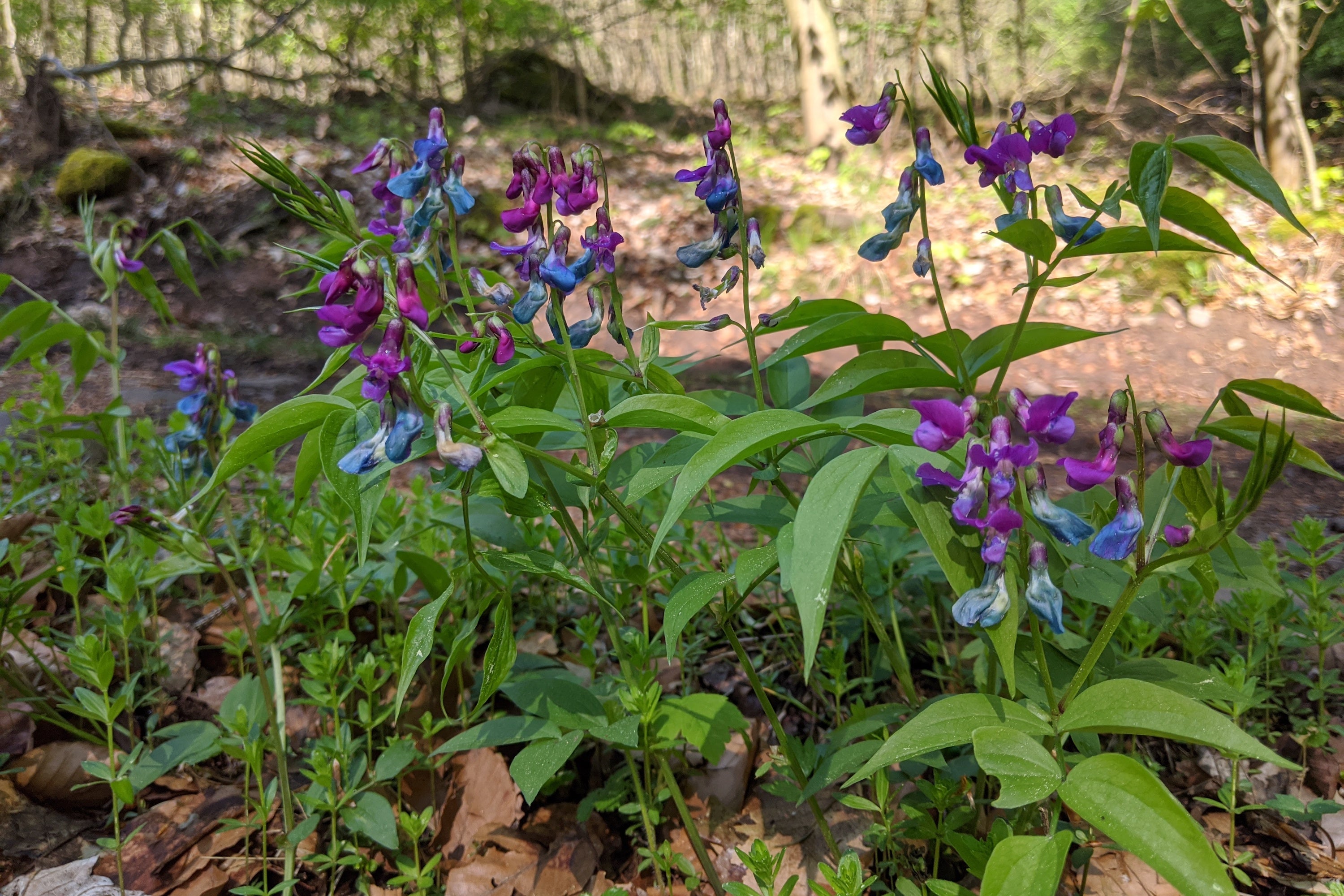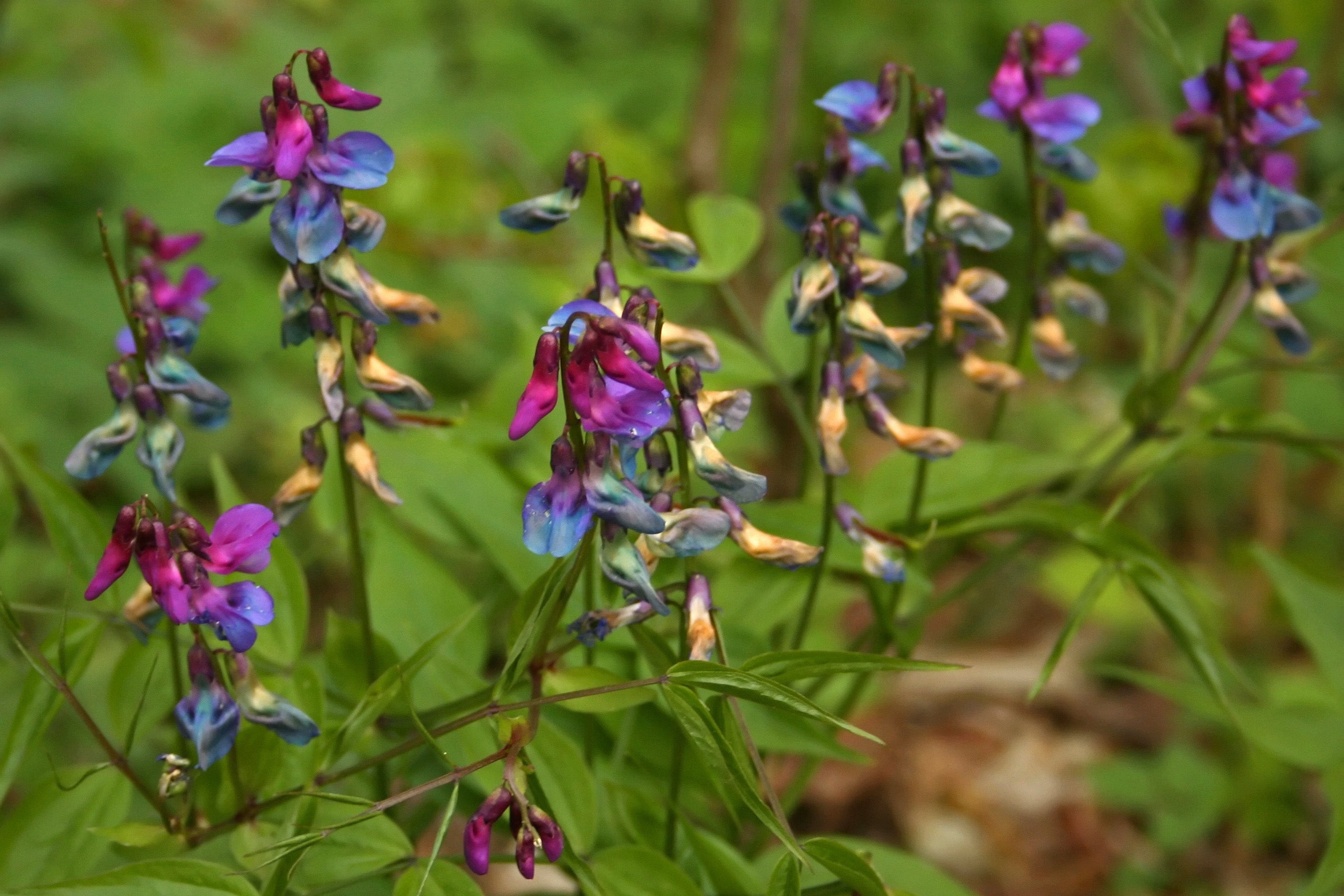Lathyrus vernus
Approx. 0.5 litre pot
About this cultivar:
Lathyrus vernus is a non-climbing perennial sweet pea. It is a multi-stemmed, clump-forming plant with a beautiful bushy habit. Typically pea-like flowers are reddish purple with red veins, becoming more violet-blue as they mature. Pinnate (having leaflets arranged on either side of the stem, typically in pairs opposite each other), light green leaves lack tendrils, so the don't climb!
Species name means of spring. Native to Europe and parts of northern Asia, even Siberica. Its typical habitat is broad-leaved woodland, forest margins, plantations and clearings. This one is tough. Guess what? It also has the RHS AGM.
Quite slow to get started, but worth it.
- Position: Full sun, partial shade
- Soil: Almost any soil, grows well in Ballyrobert
- Flowers: May, June, July
- Other features: Royal Horticultural Society Award of Garden Merit (RHS AGM)
- Hardiness: H5 - Hardy in most places throughout the UK even in severe winters (-15 to -10°C), Fully hardy - grows well in Ballyrobert
- Habit: Clump forming, bushy
- Foliage: Deciduous
- Height: 15 - 25 cm (1.3 - 2 ft)
- Spread: 40 - 60 cm (1.3 - 2 ft)
- Time to full growth: 2 to 5 years
- Plant type: Herbaceous Perennial
- Colour: Green, pink, red, purple
- Goes well with: -
About this genus:
Lathyrus (lath-e-rus) is the ancient Greek name for some leguminous plant. Nowdays Lathryrus is a genus of flowering plant species known as sweet peas and vetchlings. Lathyrus is in the legume family (Fabaceae,) and contains approximately 160 species. They are native to temperate areas all over the world. There are annual and perennial species which may be climbing or bushy (we only deal with perennnals here!). Some species are grown for food but most in cultivation today are grown for rnamental purposes - often for cut flowers. Flowers on these cultivated species may be rose, red, maroon, pink, white, yellow, purple or blue, and some are bicolored. Some species are also grown for their fragrance.
There is too much variety in Lathyrus to be general about Lathyrus, but (as always) the species that perform well in our garden are the only species we sell; so these guys should be fine in our climate, in heavy clay soil, and anywhere but full-shade. In other words: they will probably grow anywhere that isn't too dry!
What to grow them with: hmmm, well we can't generalize- some are climbers, some are not etc








